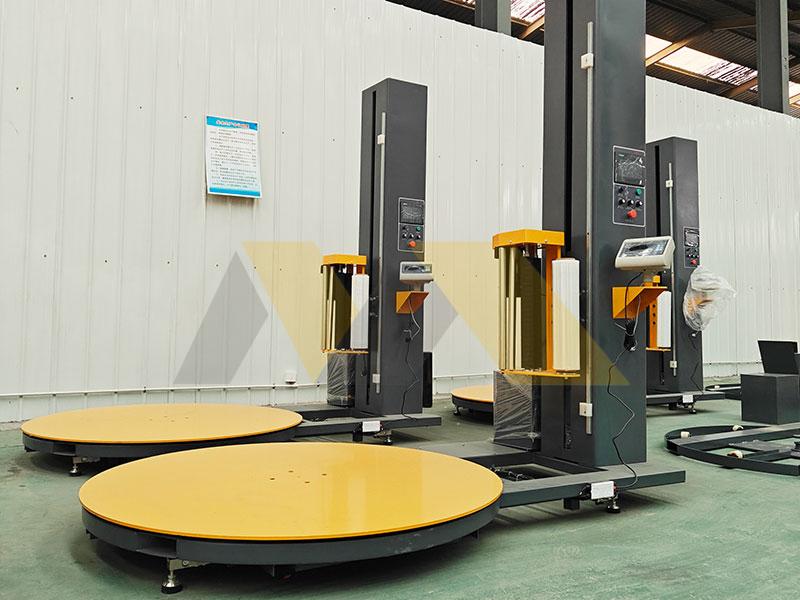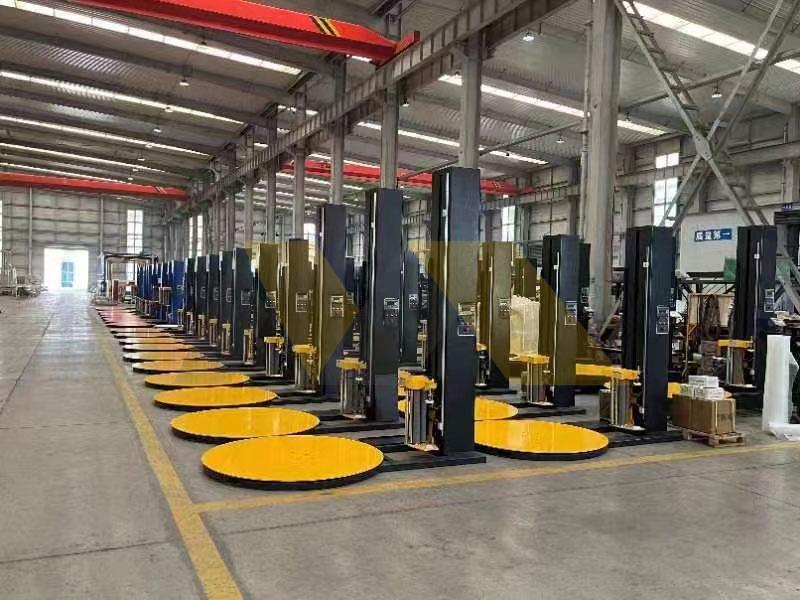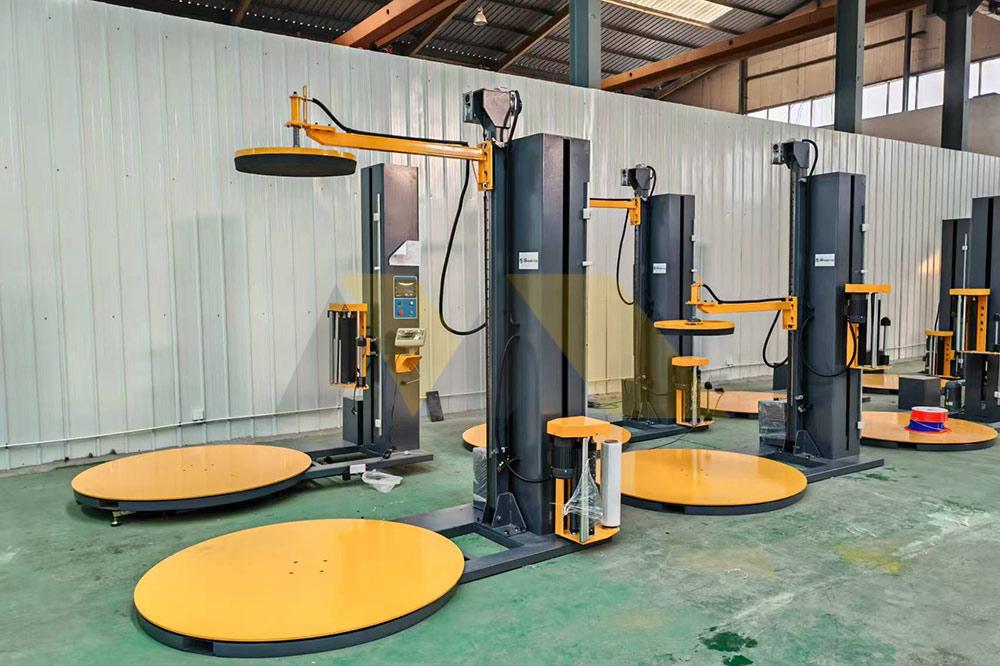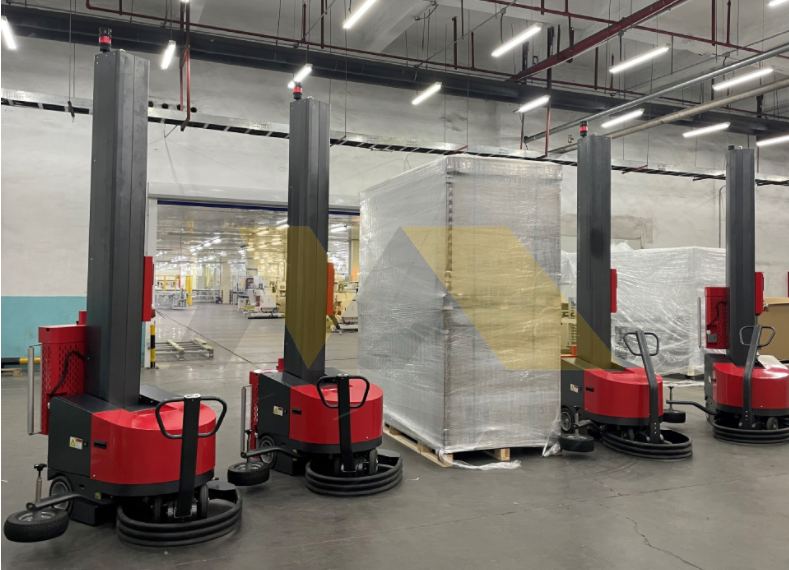Running a bustling warehouse where delays are costly? Daily shipments pile up while employees struggle with manual wrapping. That’s why I always recommend fully automatic pallet wrappers – they seamlessly integrate with sorting systems to eliminate bottlenecks.
Fully automatic pallet wrapping machines deliver exceptional value for high-volume operations. They integrate flawlessly with conveyors, maintain consistent tension, and handle over 40 pallets/hour while reducing labor costs by 60%. For daily shipping volumes exceeding 200 pallets, the ROI outweighs initial investment in under 12 months.
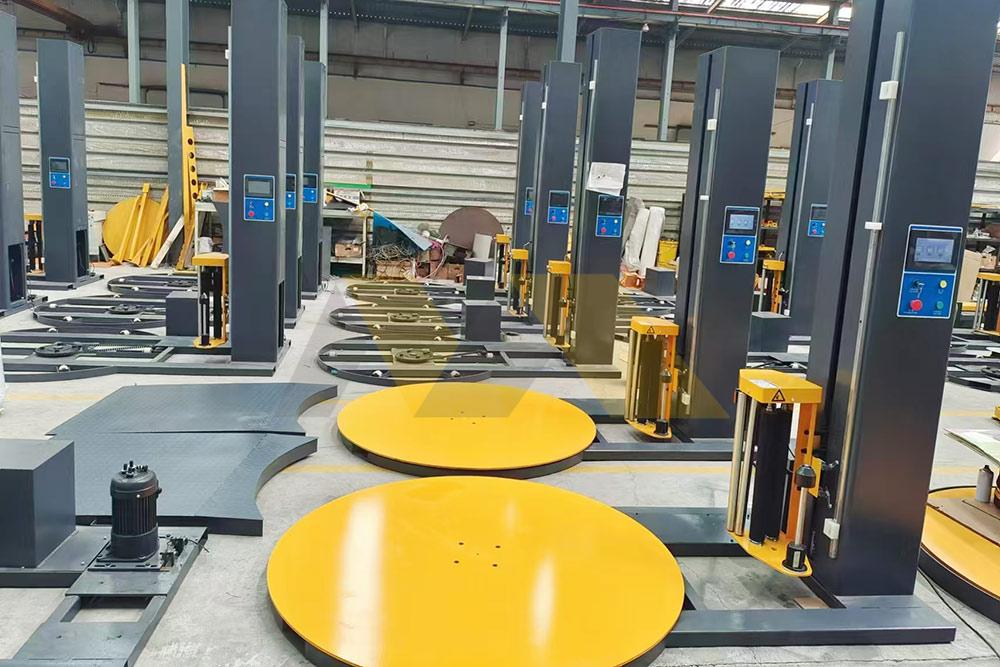
When your operation needs speed and precision, this technology transforms logistics. Let’s explore the real-world applications where automation shines brightest.
Which industries benefit most from full automation?
Watching products pile up unshipped? Pharmaceutical goods expire while distribution delays frustrate retailers. This is where wrapping automation becomes mission-critical.
For industries with high throughput and stable SKU profiles, full automation delivers over 300% efficiency gains. E-commerce giants, pharmaceuticals, large-scale manufacturers, and FMCG leaders benefit most through eliminated bottlenecks. Their predictable operations allow automation systems to reach breakeven point in 5-8 months by cutting labor and error costs.
Why these sectors get maximum returns
Warehouse managers often ask why certain industries get better results. Through shipping hundreds of machines globally, we’ve identified three critical factors:
-
Output consistency
Products like medical supplies and consumer goods move through standardized processes. Automation thrives in repetitive workflows without constant reprogramming -
Volume thresholds
At 100+ daily pallets, labor savings surpass equipment costs. Food factories shipping seasonal spikes gain flexibility without hiring temporary workers -
Handling sensitivity
Pharma and electronics require flawless wrapping integrity. Automated tension control prevents $10k+ damage claims from shifting loads
Industry-Specific Breakdown
| Industry | Automation Benefit | Typical ROI Timeline |
|---|---|---|
| E-commerce | 70% faster processing during sales peaks | 6 months |
| Pharmaceuticals | Zero contamination risk with sealed wrapping | 5 months |
| Food Production | Humidity-proof pallet protection for perishables | 8 months |
| Electronics | Anti-static film handling prevents component damage | 7 months |
One Japanese medical distributor eliminated costly recalls after installing our automated system. Their consistent wrapping quality reduced insurance premiums by 35%. Need personalized guidance? WhatsApp us direct for a throughput analysis.
How much film can automation save?
Picture tearing open film rolls constantly? Manual wrapping often wastes 25% due to inconsistent tension. Multiply that across 500 pallets – that’s lost profit vanishing daily.
Intelligent automation cuts film usage by 18-27% through microprocessor-controlled pre-stretch. Our machines precisely measure optimal tension per load, maintaining protection while eliminating wasteful over-wrapping. The savings generate 3-5% higher margins at industrial scale.

The science behind material savings
Material Optimization Technology
Modern systems use four key mechanisms to control film waste:
- Pre-stretch engagement – Achieves 250-300% elongation before application, requiring less material
- Load-sensing tension – Laser guides calibrate pressure based on pallet dimensions/weight
- Programmable top/bottom ratios – Avoids unnecessary coverage on stable base layers
- Roll monitoring systems – Auto-switch before empty rolls cause incomplete wraps
Annual Film Savings Comparison (Based on 250 pallets/day)
| Operation Type | Film Used (kg) | Annual Cost | Automation Savings |
|---|---|---|---|
| Manual Wrapping | 4,600 kg | $41,400 | Base Line |
| Semi-Automated | 4,100 kg | $36,900 | $4,500 |
| Full Automation | 3,300 kg | $29,700 | $11,700 |
An American distributor recovered their machine cost in 14 months purely through film savings after switching to our WR-800 model. Curious about your potential savings? Share your monthly pallet counts via WhatsApp us direct for a custom film reduction analysis.
What safety features should you expect?
Heard about warehouse staff getting trapped or injured? Accidents during manual wrapping cause over 12% of logistics industry incidents. Proper automation eliminates these risks completely.
Prioritize mechanical isolation, triple-sensor light curtains, and dual E-stops that halt operations instantly. These prevent crushing incidents by ensuring inaccessible operation zones. Our CE-certified machines additionally feature lockable power cabinets preventing unauthorized override attempts – critical when you’re liable for contractor safety.
Protecting People and Production
For us, safety isn’t optional. We implement layers of protection validated through thousands of installations:
Critical Safety Framework Architecture
-
Operator Isolation Zones
- Photoelectric barriers detect movement within 2ms
- Entire operation pauses until cleared
-
Emergency Protocols
- E-stop buttons within arm’s reach everywhere
- Mechanical brakes engage in under 0.5 seconds
-
Maintenance Safeguards
- Physical lockout points on power units
- Authorization-based access levels
Safety Feature Comparison
| Protection Level | Manual Wrapping | Semi-Auto | Full Automation |
|---|---|---|---|
| Labor Safety Score | 56/100 | 78/100 | 97/100 |
| Employee Training Hours | 12 | 6 | 2 |
| Injury Risk Rating | High | Medium | Minimal |
When installing machines in Japanese factories, their compliance officers noted reduced training needs by 80% from intuitive safety systems. Send us your facility safety requirements – we’ll recommend tailored solutions via WhatsApp us direct.
Semi-auto vs fully auto: which to choose?
Struggling with temporary labor shortages? Semi-auto machines still require constant operator attention – a costly bottleneck during workforce fluctuations.
For facilities wrapping under 100 pallets daily, semi-automatic machines deliver value. But for output exceeding 200 pallets or working 24/7 shifts, full automation reduces staffing needs by 75% while increasing throughput by 230%. The higher initial purchase pays dividends within operational months.

Strategic Selection Framework
Through installing 300+ systems, we’ve refined selection criteria for optimum CAPEX efficiency:
Capacity-Based Selection Matrix
| Operation Scale | Pallet Volume | Recommended System |
|---|---|---|
| Small Startup | < 50/day | Manual/Semi-auto |
| Growing Business | 50-150/day | Advanced Semi-auto |
| High Output | 150-300/day | Fully Automatic |
| Industrial Scale | 300+/day | Custom Robotic Units |
Key Decision Factors:
- Labor costs per pallet (automation cuts $0.38-$1.15 per unit)
- Shift patterns (automation enables continuous operation)
- Scalability planning (modular systems allow later upgrades)
Total Cost of Ownership Analysis (3 Years)
| Expense Type | Semi-Auto | Fully Auto | Savings |
|---|---|---|---|
| Equipment Cost | $24,000 | $67,000 | -$43,000 |
| Labor | $144,000 | $36,000 | +$108,000 |
| Film | $33,500 | $28,900 | +$4,600 |
| Downtime Loss | $12,000 | $3,000 | +$9,000 |
| Total | $213,500 | $134,900 | +$78,600 |
A Singapore cold storage client upgraded after eighteen months – our integration team repurposed existing conveyors to lower their transition cost by 40%. Facing growth decisions? Let’s evaluate your production roadmap together: WhatsApp us direct
Conclusion
Full automation delivers measurable efficiency gains and ROI for high-volume operations. Evaluate your throughput requirements to unlock 40-70% cost reductions.

